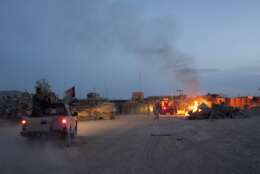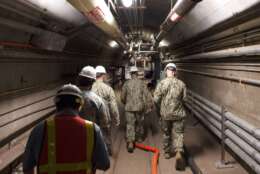Defense
-
The Defense Department is shifting to a multi-cloud environment as it looks to adopt artificial intelligence and machine learning. But with the private sector hording so much technology talent, former Navy CIO Janice Haith, now at Oracle, sees the need for a lean, but multifaceted government workforce.
March 23, 2022 -
In today's Federal Newscast: GSA attempts some creative inflation-slashing tricks for contractors. Internet crime was a growth industry in 2021. And the number of federal contractors is shrinking.
March 23, 2022 -
Cyberthreats increased dramatically following the Russian invasion into Ukraine. Given that, DoD continues to work on zero trust and containing its threat surface as it expands cloud use, explains Veritas’ Bill Harrod during the DoD Cloud Exchange.
March 23, 2022 -
Tracking cloud-only consumption at the portal is relatively easy, but how can DoD account for costs as data moves from the cloud to on premises and back again? Find out more in our discussion with Veritas’ Mike Malaret during the DoD Cloud Exchange.
March 22, 2022 -
Security clearances, how to get them what you can do with them is an ever-changing topic. And the last couple of years have brought quite a few changes, especially since the machinery moved from the Office of Personnel Management to the Defense Department.
March 22, 2022 -
In today's Federal Newscast, House lawmakers are pressing the Federal Aviation Administration for more details on what it's doing to ensure the safety of the air transportation system as commercial companies roll out 5G wireless services.
March 22, 2022 -
The program focuses on balance as a way of determining health.
March 21, 2022 -
Defense Department components often give grants or contracts to colleges and universities, and companies for that matter, to do research. Now the Defense Office of Inspector General has found, research contractors don't do a good job of protecting that information from cyber attacks.
March 21, 2022 -
Burn pits, they're the agent orange of the most recent generation of veterans. Veterans who were exposed to the open junk incinerators in Iraq and Afghanistan have long complained of resulting health maladies. President Joe Biden mentioned it in his state of the union speech. Some VA benefits have begun to trickle out.
March 21, 2022 -
In today's Federal Newscast, lawmakers want the National Guard Inspector General to investigate bias in the Maryland National Guard.
March 21, 2022 -
Omnibus bill adds more than $1 billion in facility upkeep funding, an area DoD has knowingly neglected in its budgets for at least a decade.
March 21, 2022 -
DoD's new JADC2 implementation plan is still classified, but signs of it will start to appear in the forthcoming 2023 budget proposal.
March 21, 2022 -
The Coast Guard will establish a new rating next year called cyber mission specialist. Officials hope it will attract new recruits and strengthen the Coast Guard's ability to carry out its cyber mission.
March 18, 2022 -
In today's Federal Newscast, a new program offers opportunities for more women to join the Senior Executive Service.
March 18, 2022 -
In a March 16 memo, Deputy Defense Secretary Kathleen Hicks wrote that there will not be a “one-size-fits-all” plan to return to work.
March 17, 2022














